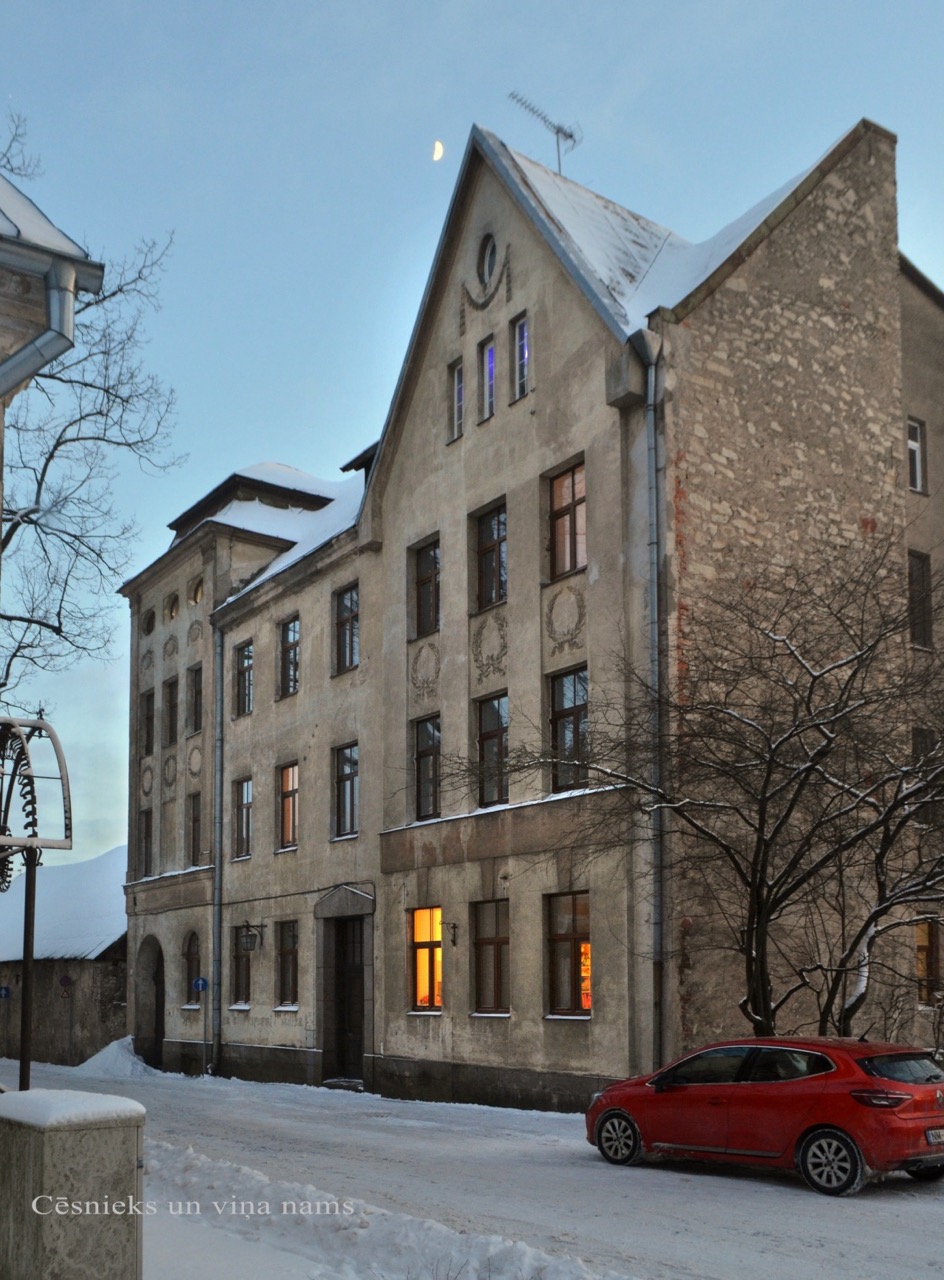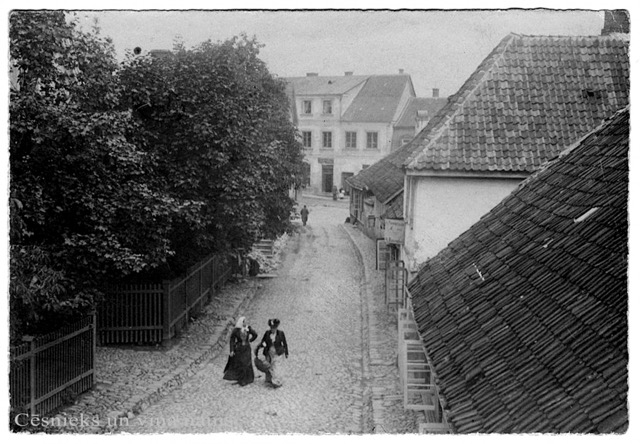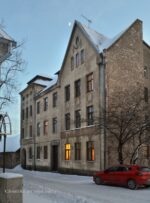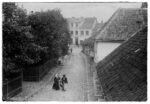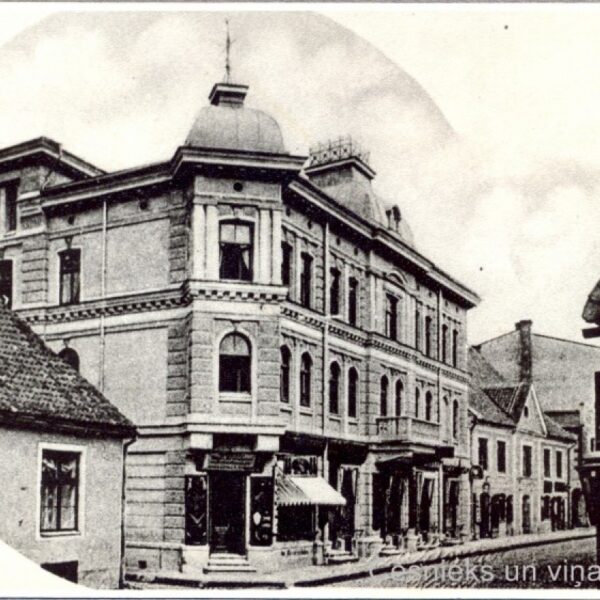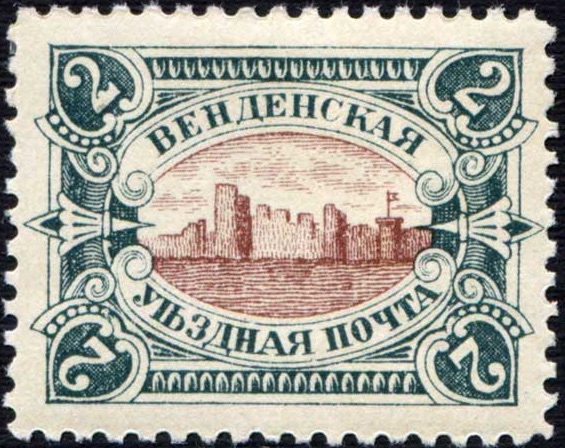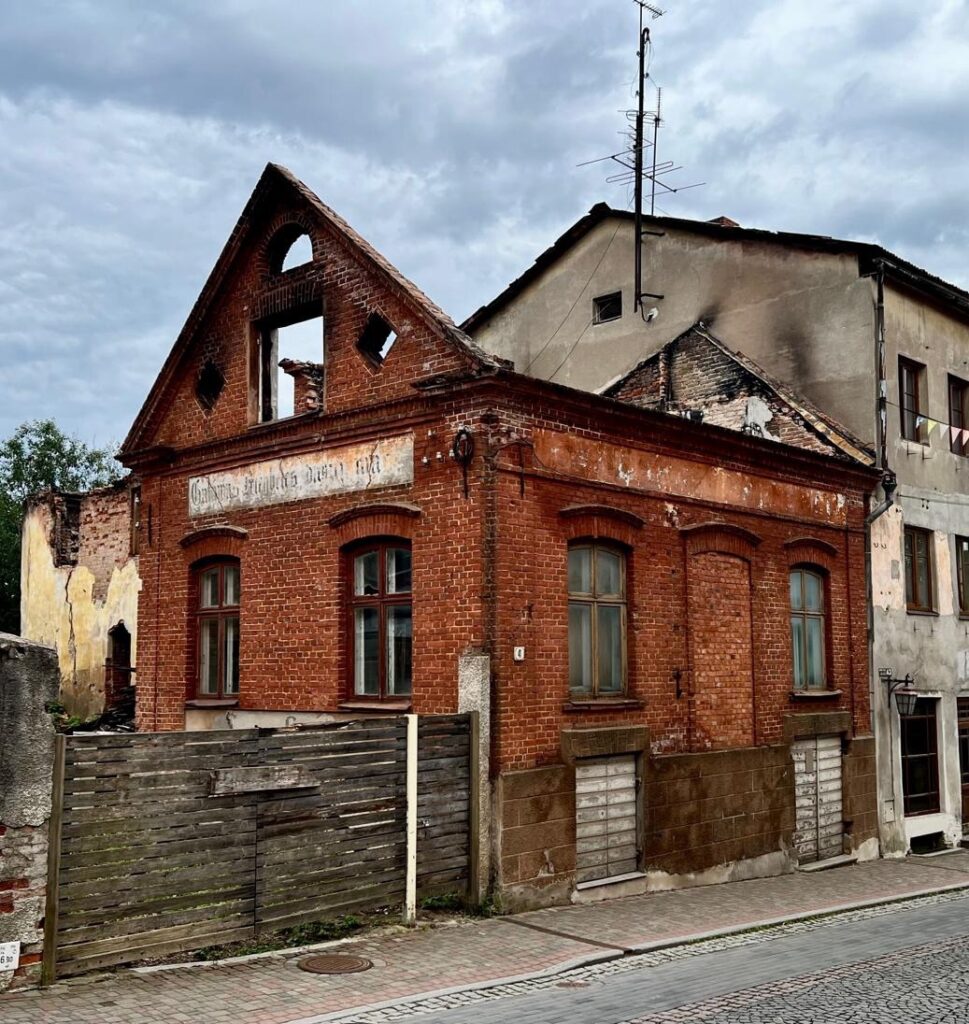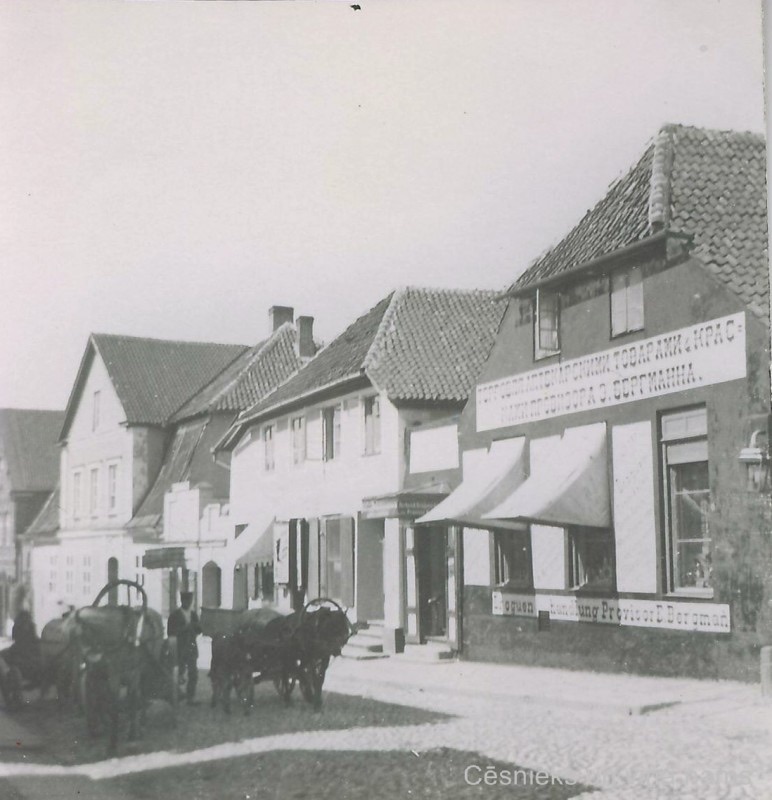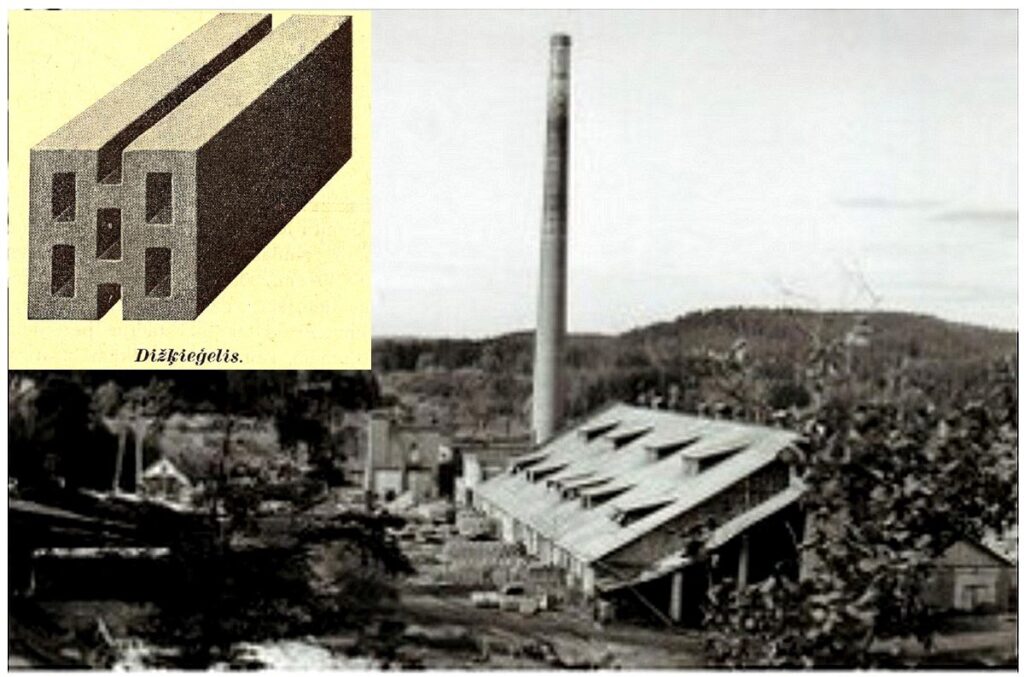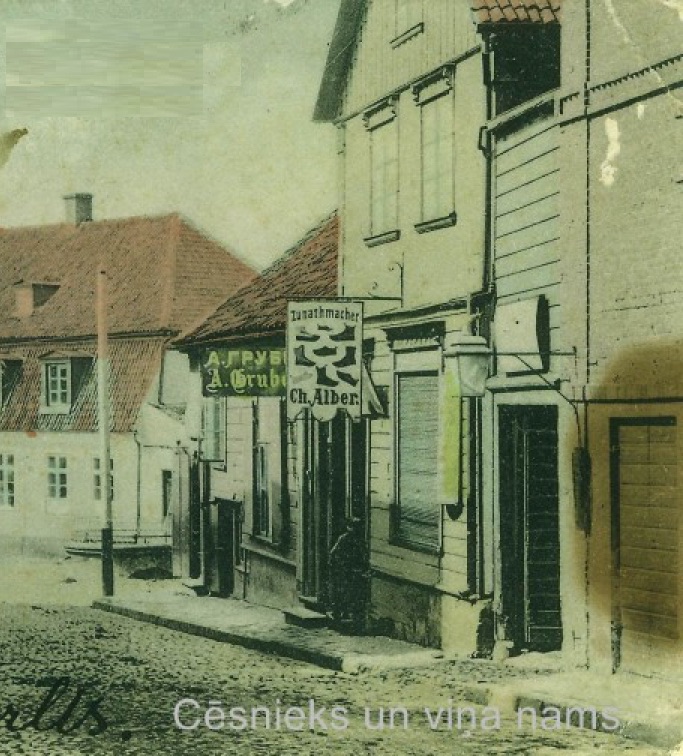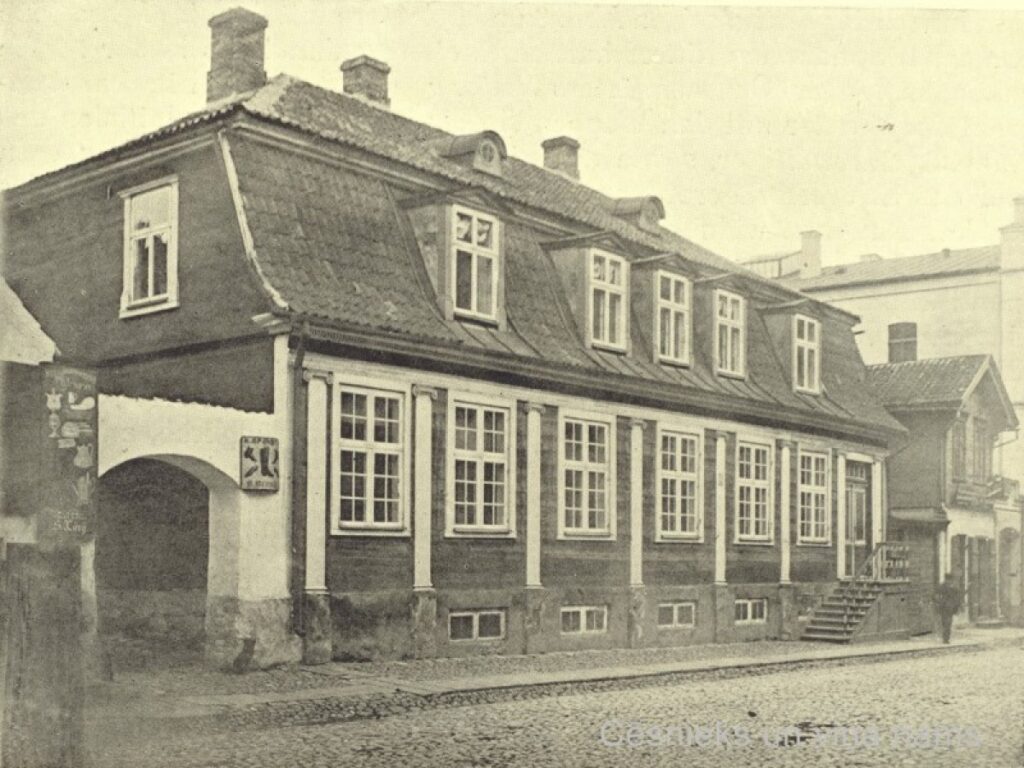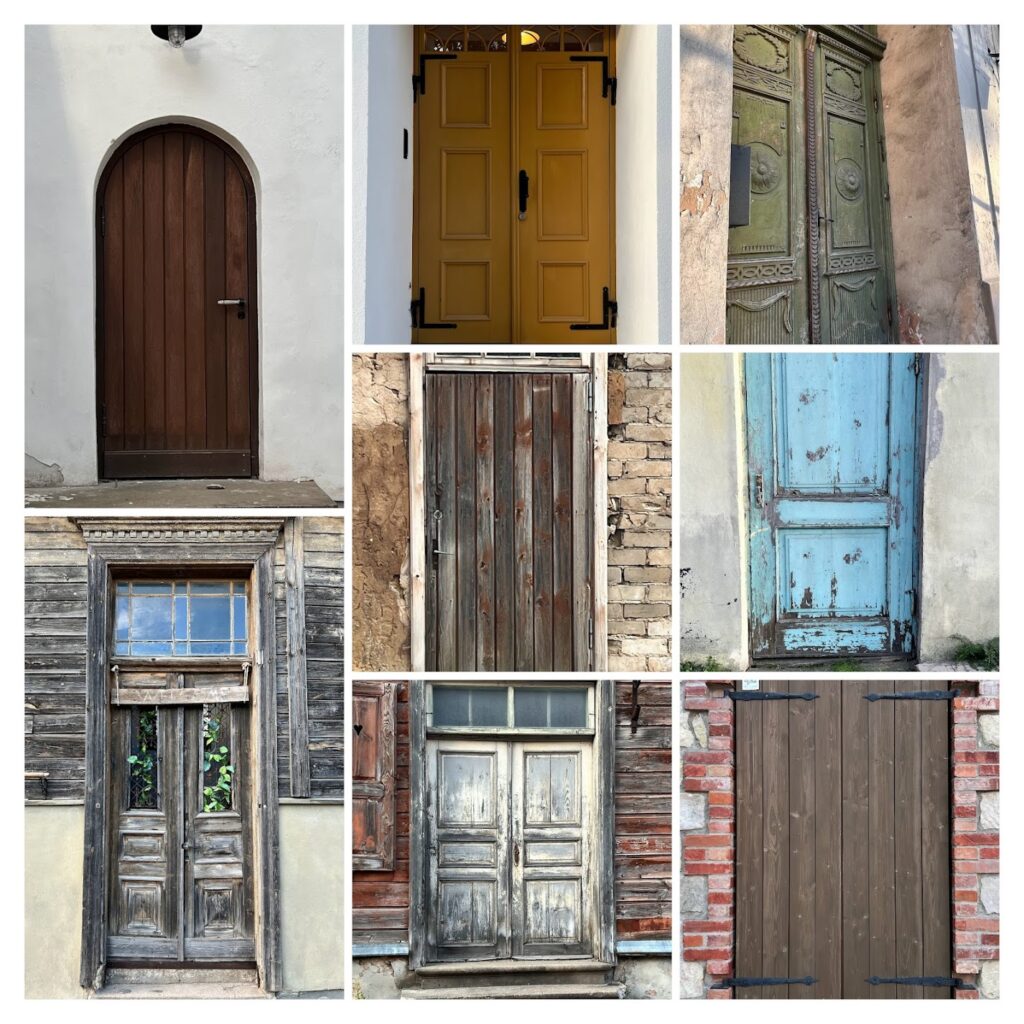Perched in the landscape of the old town of Cesis, the pearl of Art Nouveau architecture at 3 Lielaja Kalēju Street has been a testimony to the city’s prosperity in the early 20th century for more than a century. This elegant three-storey building, with its asymmetrical facade and exquisite decorative bricks, is one of the most striking examples of classical Art Nouveau in Cēsis.
The plot of land on which this building proudly stands today was originally located at the defensive wall of the medieval town of Cesis, close to the Riga Gate. Its history dates back to 1665, when it was marked as an empty square during a Swedish audit, claimed by a “Free Peasant of Komuižas”. Over the years, the plot of land has undergone various vicissitudes: in 1657, Russian troops burnt down the buildings there during an attack on the town, and later it was given to the town clerk, Keenhold, as a garden.
At the end of the 18th century, the plot of land was already home to Eberhard’s wooden house, which became the property of Helen Schultz after the division of the inheritance. The property changed hands several times in the following decades until it was acquired by Gustav von Bremsen, a renowned adjutant of the Court of Bruges, in the mid-19th century.
The real hero of the story appears in 1906, when the plot of land with a wooden dwelling house and a stone extension was bought for 2500 rubles by the talented Cēsis carpenter Mārtiņš Cinis. This skilled craftsman, who had won a silver medal at the Limbaži Exhibition for his dining room furniture, dreamt of something grand. In 1911-1912, borrowing a considerable sum of money, he built a proud three-storey stone house in classical Art Nouveau style with ornate decorative elements typical of the then fashionable Neoclassicism. Interestingly, the building was erected relatively quickly, despite the shortage of construction workers in Cēsis at the time. Several houses were being built in the town at the same time – there was a shortage of both labour and building materials, and the landlords often lacked money to pay wages. Sometimes groups of arrested persons accompanied by a guard were even used for construction work.
The second floor of the building was specially adapted to the needs of the Cesis Rentera (State Treasury), even incorporating a special money vault with double iron doors and rail-reinforced walls. The rental of these rooms provided the state institution with a stable income, while the other floors were used for apartments.
Unfortunately, the irony of life proved cruel to the enterprising carpenter. 1919. In 2001, at the age of only 44, Mārtiņš Cinis died, probably due to the typhus epidemic that was raging in Cēsis at the time. Even before his death, in 1917, Cinis sold his proud house to the writer and pastor Andriev Niedra for 50 000 roubles. Niedra, who had previously worked as a bookseller and lived near Cēsis, in the parish of Līvu “Pelītės” (1903-1905), was at that time the pastor of Kalsnava. He had developed 80 ha of marshy land into a profitable farm and probably invested the funds in this property. Reed moved to Cēsis in December 1918 because his house had been attacked twice in Kalsnava. At first the family moved to Tirza, but later to Cēsis, where the two younger sons were studying in L. Ausēja at the real school.
Andrievs Niedra became a controversial figure in Latvian history when he headed the German-backed cabinet of ministers in May and June 1919 (from 15 May to 26 June 1919). This action aroused the condemnation of the Latvian public, and after the victory of the Latvian army and the Allies in the Bermontide Niedra was recognised as a traitor to the Latvian state. 1919. In November 2009, his property was sequestrated (the authorities prohibited or restricted the use or disposal of the property in the interests of the State). At that time, Niedra had already fled to Klaipėda.
Niedra returned to Riga in May 1924, where he was arrested and convicted of high treason and sentenced to six years in prison. He was pardoned by President Janis Cakste, but Niedra was expelled from Latvia. From 1926 he lived in East Prussia, where he worked as a pastor in Altstadt (near Christburg) until 1930.
Interestingly, Reed managed to retain ownership of the building, which he managed through trustees. 1926. In 1910, he authorised his son Kārlis Niedra, who lived in Riga, to handle property matters in Latvia. On 15 May 1928, he issued a power of attorney to Jānis Ansbergs, a solicitor in Riga, to handle the sale of real estate. 1930. In 1910 the house was purchased for 27 000 lats by Milda Straube (née Maizīte) through her trustee – her conjugal friend Traugotas Aleksandrs Straubas, a doctor in Rūjiena.
The building at 3 Lielaja Kalēju Street was located outside the residents’ active commuting area, so there were no shops on the ground floor, as was usual in the buildings on Riga Street. The apartments were rented out to private individuals, public organisations and some self-employed persons. 1929. In the year 2005, the “Kalnu Saules kabinė” (Mountain Sun Cabinet) of the Latvian Teachers’ Sick Fund was located in apartment 4 of the building, and later that year the doctor Olga Gulbe started to see patients there.
The Straub family managed the house until the Soviet occupation, when the property was nationalised. 1942. In 1917, during the German occupation, Milda Straube tried to recover her property, but there are no documents in the Land Registry records to prove that she had recovered her property.
Today, this Art Nouveau gem still adorns the Old Town of Cesis, testifying to the talents of local craftsmen and the economic prosperity of the town in the early 20th century, when Cesis experienced a real building boom.
The materials used for the description are:
Dace Cepurīte, Mg. hist., Research “Cēsnieks un jego nams”
Collections of Cēsis Castle Museum

